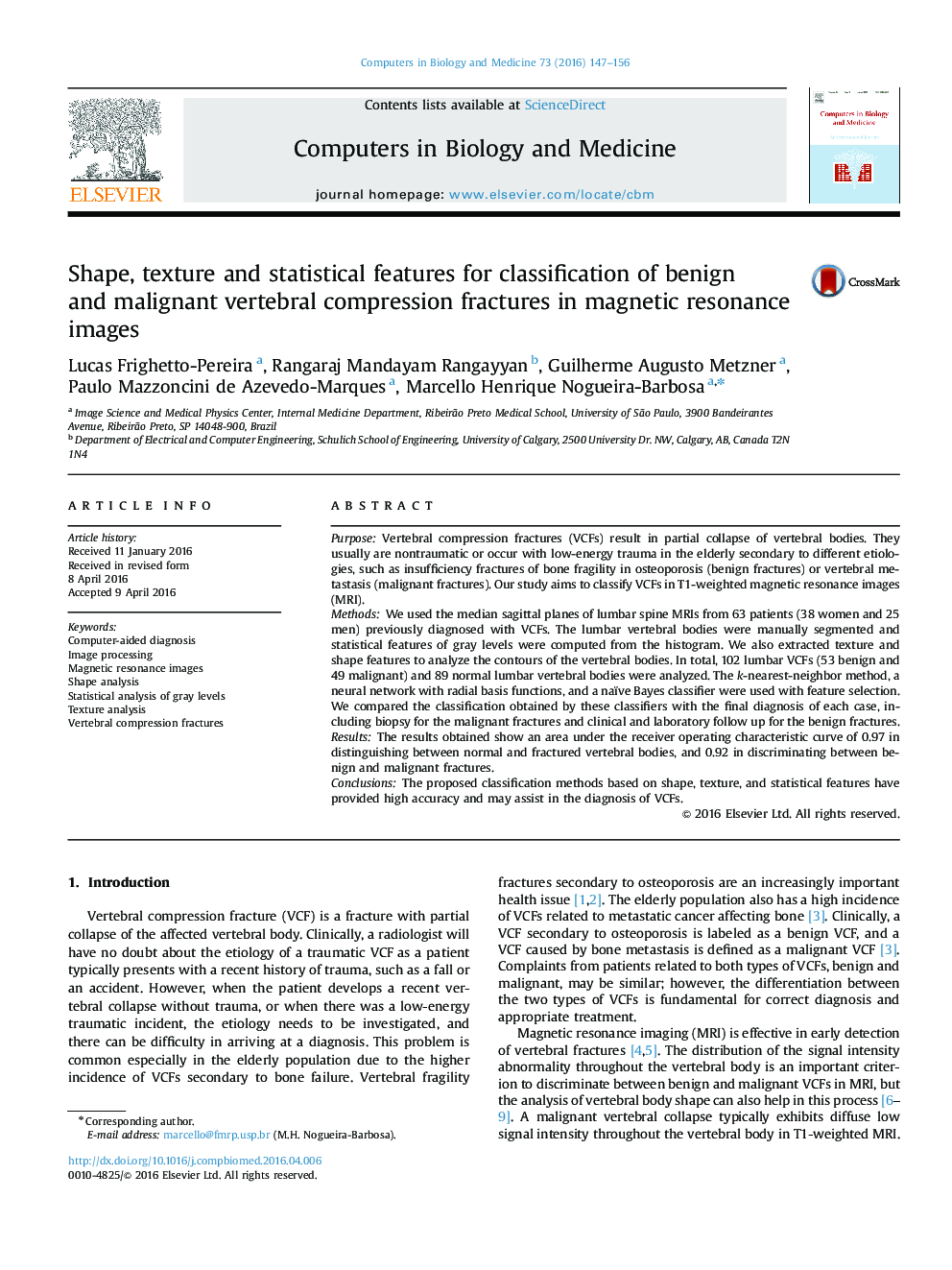| کد مقاله | کد نشریه | سال انتشار | مقاله انگلیسی | نسخه تمام متن |
|---|---|---|---|---|
| 504965 | 864455 | 2016 | 10 صفحه PDF | دانلود رایگان |
• Vertebral compression fractures (VCFs) involve partial collapse of vertebral bodies.
• Statistics of gray levels, texture features, and shape features were computed.
• Classification of normal vertebral bodies versus VCFs was performed.
• Area under the receiver operating characteristic curve AUROC=0.97 was obtained.
• AUROC=0.92 was obtained in classification of benign versus malignant VCFs.
PurposeVertebral compression fractures (VCFs) result in partial collapse of vertebral bodies. They usually are nontraumatic or occur with low-energy trauma in the elderly secondary to different etiologies, such as insufficiency fractures of bone fragility in osteoporosis (benign fractures) or vertebral metastasis (malignant fractures). Our study aims to classify VCFs in T1-weighted magnetic resonance images (MRI).MethodsWe used the median sagittal planes of lumbar spine MRIs from 63 patients (38 women and 25 men) previously diagnosed with VCFs. The lumbar vertebral bodies were manually segmented and statistical features of gray levels were computed from the histogram. We also extracted texture and shape features to analyze the contours of the vertebral bodies. In total, 102 lumbar VCFs (53 benign and 49 malignant) and 89 normal lumbar vertebral bodies were analyzed. The k-nearest-neighbor method, a neural network with radial basis functions, and a naïve Bayes classifier were used with feature selection. We compared the classification obtained by these classifiers with the final diagnosis of each case, including biopsy for the malignant fractures and clinical and laboratory follow up for the benign fractures.ResultsThe results obtained show an area under the receiver operating characteristic curve of 0.97 in distinguishing between normal and fractured vertebral bodies, and 0.92 in discriminating between benign and malignant fractures.ConclusionsThe proposed classification methods based on shape, texture, and statistical features have provided high accuracy and may assist in the diagnosis of VCFs.
Journal: Computers in Biology and Medicine - Volume 73, 1 June 2016, Pages 147–156
